new posts in all blogs
Viewing: Blog Posts Tagged with: Ashley Wolff, Most Recent at Top [Help]
Results 1 - 5 of 5
How to use this Page
You are viewing the most recent posts tagged with the words: Ashley Wolff in the JacketFlap blog reader. What is a tag? Think of a tag as a keyword or category label. Tags can both help you find posts on JacketFlap.com as well as provide an easy way for you to "remember" and classify posts for later recall. Try adding a tag yourself by clicking "Add a tag" below a post's header. Scroll down through the list of Recent Posts in the left column and click on a post title that sounds interesting. You can view all posts from a specific blog by clicking the Blog name in the right column, or you can click a 'More Posts from this Blog' link in any individual post.

By:
Betsy Bird,
on 7/14/2016
Blog:
A Fuse #8 Production
(
Login to Add to MyJacketFlap)
JacketFlap tags:
Megan Halsey,
Wendy Anderson Halperin,
picture book readalouds,
2016 picture books,
2016 reviews,
Reviews 2016,
2016 picture book readalouds,
Christee Curran-Bauer,
Danny Adlerman,
Dar (Hosta),
Jim Babjak,
Kevin Kammeraad,
Kim Adlerman,
picture book song books,
Ralph Masiello,
Symone Banks,
The Kids at Our Home,
Reviews,
Lindsay Barrett George,
Demi,
Ashley Wolff,
Leeza Hernandez,
Pat Cummings,
Add a tag
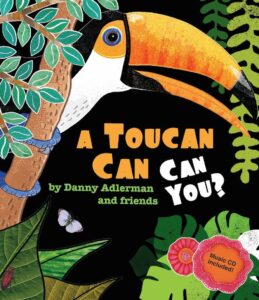 A Toucan Can, Can You?
A Toucan Can, Can You?
By Danny Adlerman
Illustrated by Lindsay Barrett George, Megan Halsey, Ashley Wolff, Demi, Ralph Masiello, Wendy Anderson Halperin, Kevin Kammeraad, Pat Cummings, Dar (Hosta), Leeza Hernandez, Christee Curran-Bauer, Kim Adlerman, and Symone Banks
Music by Jim Babjak
The Kids at Our House Children’s Books
$19.95
ISBN: 9781942390008
Ages 3-6
On shelves now
Under normal circumstances I don’t review sequels. I just don’t, really. Sequels, generally speaking, require at least a rudimentary knowledge of the preceding book. If I have to spend half a review catching a reader up on the book that came before the book that I’m actually reviewing, that’s just a waste of everyone’s time. Better to skip sequels entirely, and I include chapter book sequels, YA sequels, middle grade sequels, nonfiction sequels, graphic novel sequels, and easy book sequels in that generalization. I would even include picture book sequels, but here I pause for a moment. Because once in a while a picture book sequel will outshine the original. Such is the case with Danny Adlerman’s audibly catchy and visually eclectic A Toucan Can, Can You? A storyteller’s (and song-and-dance parent’s) dream, the book is is a sequel to the book How Much Wood Could a Woodchuck Chuck but comes into its own as a writing assignment for some, a storytime to others, and a darn good book for everybody else.
Many of us are at least passingly familiar with that old poem, “How much wood could a woodchuck chuck if a woodchuck could chuck wood?” But why stop with the woodchuck? What other compound words can you break up in amusing ways? And so we are sucked into a delightful world of teaspoons spooning tea, spaceships shipping space, and ice cream screaming “ice!” Each one of these catchy little poems (which are set to music on the accompanying CD) is paired with art from an impressive illustrator. Part collaboration and part exercise in audible frivolity, Danny Adlerman’s little book packs a great big punch.
For a group collaboration to work in a picture book there needs to be a reason for it to even exist. Which is to say, why have different people do different pieces of art for the same book? To best justify bringing these artists together you need a strong hook. And brother, I can’t think of a stronger hook then a catchy little rhyme, turned into a song, and given some clever additional rhymes to go along with it. Let’s hear it for the public domain! It’s little wonder that the customary “Note to Parents and Teachers” found in books of this sort appears at the beginning of the book rather than the end. In it, mention is made of the fact that the accompanying CD has both music with the lyrics and music without the lyrics, allowing kids to make up their own rhymes. I can attest as someone who did storytimes for toddlers and preschoolers for years that music can often be a librarian’s best friend. Particularly if it has a nice little book to show off as well. So for the storytimes for younger children, go with the words. And for the older kids? I think a writing assignment is waiting in the wings.
I was quite taken with the rhymes that already exist in this book, though. In fact, my favorite (language-wise) might have to be “How much bow could a bow tie tie if a bow tie could tae bo?” if only because “tae bo” makes shockingly few cameos in picture books these days. Finding the perfect collaboration between word and text can be difficult but occasionally the book hits gold. One example would be on the rhyme “How much ham could a hamster stir if a hamster could stir ham?” Artist Leeza Hernandez comes up with a rough riding hamster in cowboy gear astride an energetic hog. Two great tastes that taste great together.
Obviously the problem with any group collaboration is that some pieces are going to be stronger than others. But I have to admit that when I looked at that line-up I was a bit floored. In an impressive mix of established artists and new up-and-comers, Adlerman pairs his illustrators alongside rhymes that best show off their talents. Demi, for example, with her meticulous details and intricate style, is perfectly suited to honeycombs, honey, and the thin veins in the wing of a honeybee, holding a comb aloft. Meanwhile Wendy Anderson Halperin tackles the line “How much paint could a paintbrush brush” by rendering a variety of famous works, from Magritte to Diego Rivera in her two-page spread. Mind you, some artists are more sophisticated than others, and the switch between styles threatens to give one a bit of whiplash in the process. Generally speaking, however, it’s lovely. And I must confess that it was only on my fourth or fifth reading that I realized that the lovely scene illustrated by newcomer Symone Banks at the end of the book is dotted with animals done by the other artists, hidden in the details.
I don’t have to do storytimes anymore. In my current job my contact with kids is fairly minimal. But I have a two-year-old and a five-year-old at home and that means all my performance skills are on call whenever those two are around. I admit it. I need help. And books like A Toucan Can: Can You? can be lifesavers to parents like myself. If we had our way there would be a book-of-the-week club out there that personally delivered song-based picture books to our door. Heck, it should be a book-of-the-DAY club. I mean, let’s be honest. Raise a glass then and toast to Danny Adlerman and his fabulous friends. Long may their snowshoes shoo, their jellyfish fish, and their rockhoppers hop hop hop.
On shelves now.
Like This? Then Try:
Source: Galley sent from author for review.

By:
Bianca Schulze,
on 2/16/2015
Blog:
The Children's Book Review
(
Login to Add to MyJacketFlap)
JacketFlap tags:
Ages 0-3,
Book Lists,
Candlewick Press,
Chronicle Books,
Gift Books,
featured,
Board Books,
Little Simon,
Leslie Patricelli,
Ashley Wolff,
David LaRochelle,
Nina Laden,
Mike Wohnoutka,
Petr Horacek,
Caroline Jayne Church,
Templar Books,
Cartwheel Books,
Boards Books,
Edward Gibbs,
Best Books for Kids,
Frann Preston-Gannon,
Best Kids Stories,
Workman Publishing Company,
Kenny Harrison,
POW! Books,
Richard Austin,
Add a tag
The best board books of 2014, as picked by the editors and contributors of The Children’s Book Review.
By Bianca Schulze, The Children’s Book Review
Published: April 12, 2011
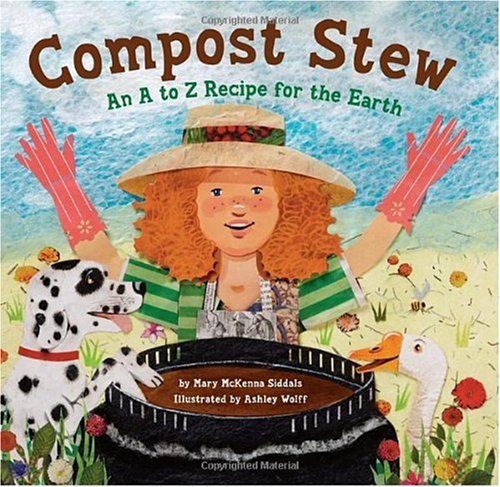 Compost Stew
Compost Stew
By Mary McKenna Siddals (Author), Ashley Wolff (Illustrator)
Reading level: Ages 4-7
Hardcover: 40 pages
Publisher: Tricycle Press; 1 edition (March 23, 2010)
Source: Publisher
Compost Stew: An A to Z Recipe for the Earth uses a clever and entertaining rhyme that, just as the title suggests, gives a great recipe for making compost. All of the ingredients are familiar household products, such as vegetable trimmings, coffee grounds, and oatmeal. At the back of the book the “Chef’s Note” can be found—it’s another witty rhyme all of its own and teaches readers what shouldn’t go in compost. The illustrations, which are rendered in gouache and collage, compliment the tone of the recipe with the use of more familiar recyclable materials.
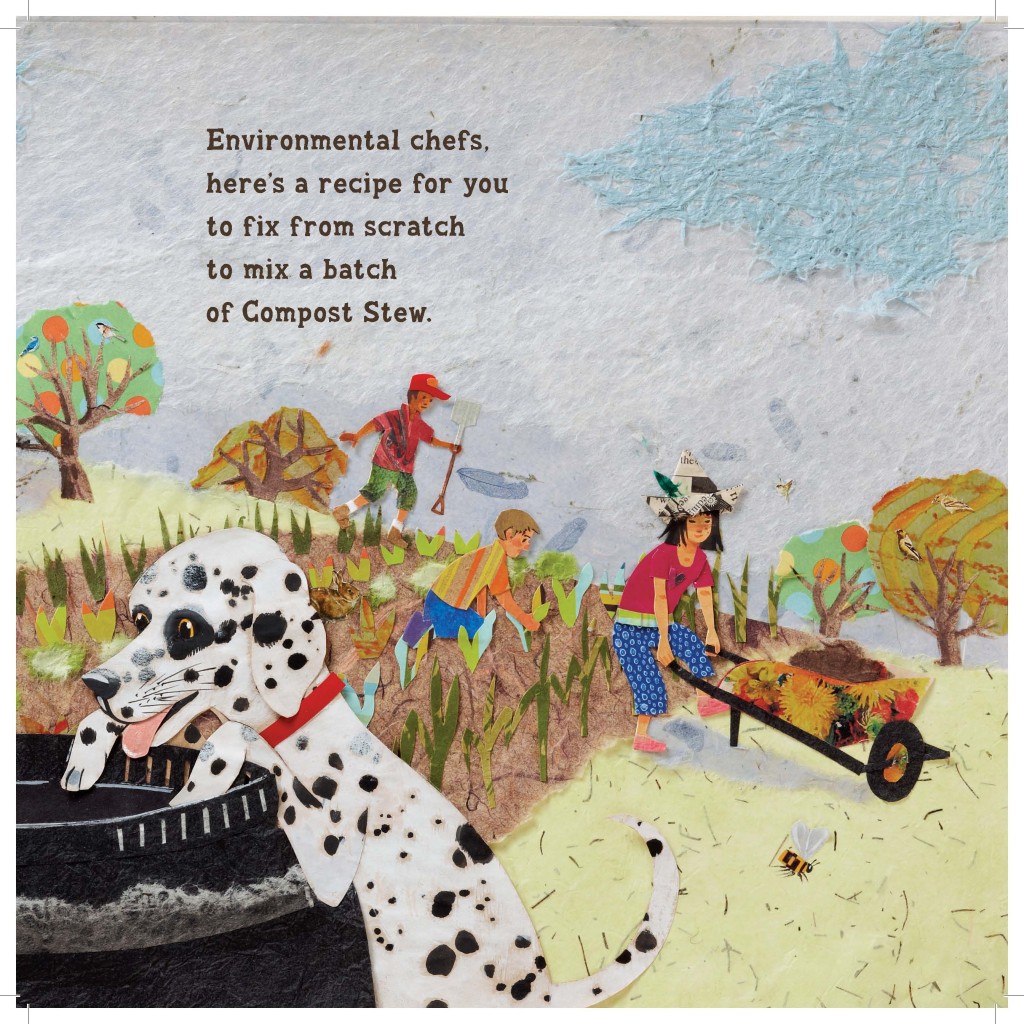
Illustration by Ashley Wolff
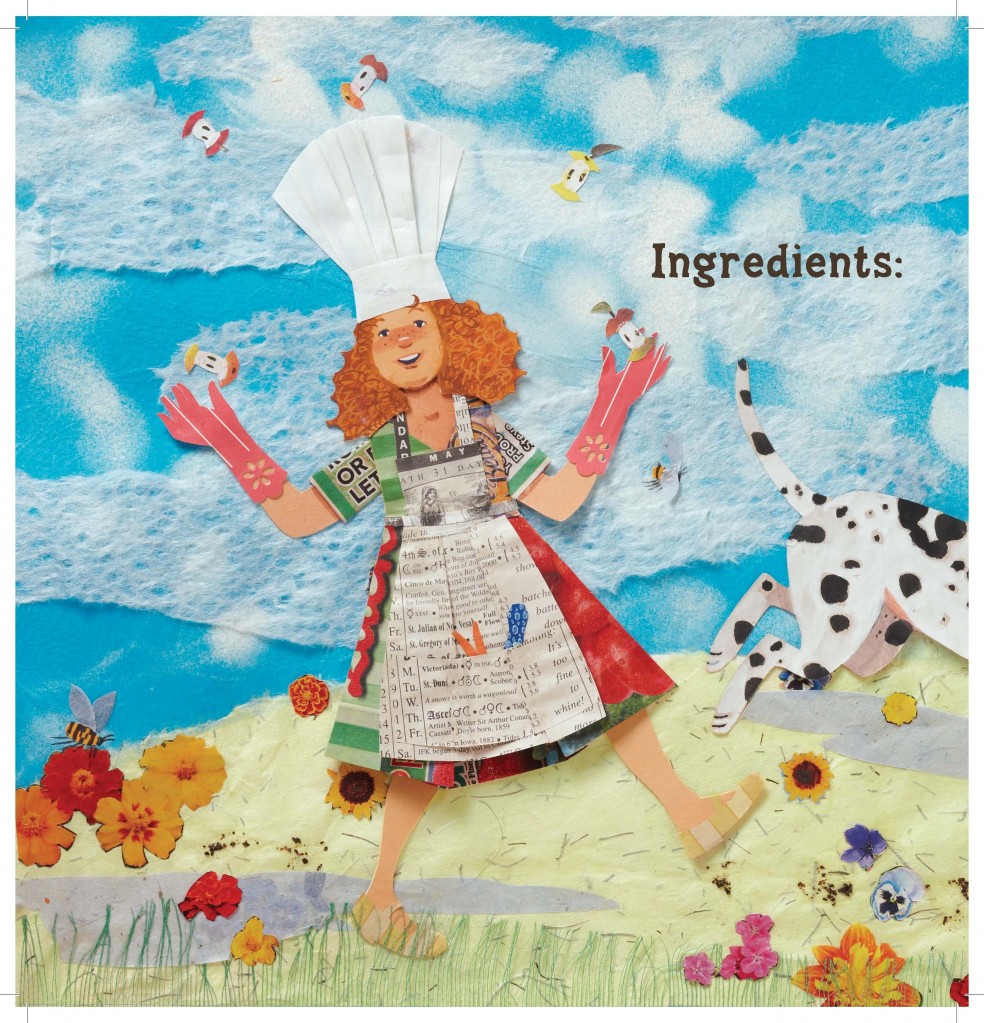
Illustration by Ashley Wolff
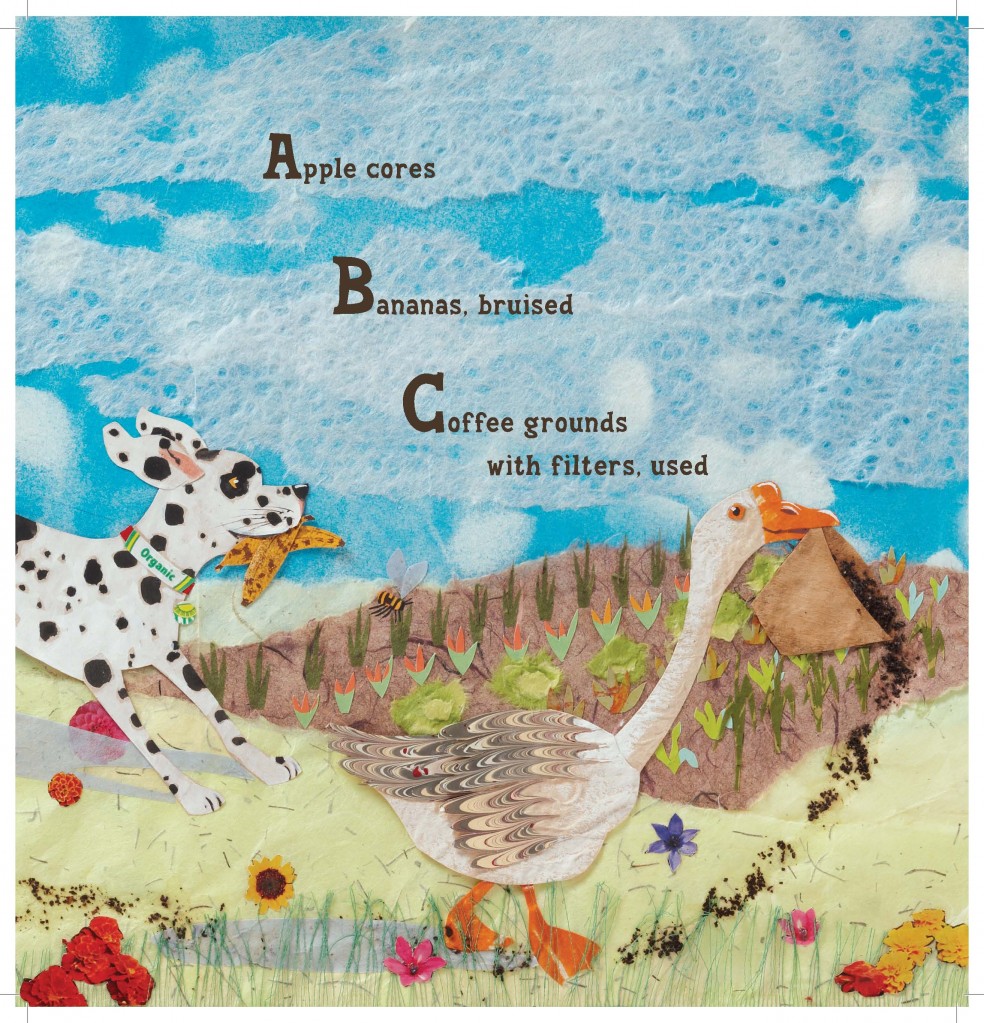
Illustration by Ashley Wolff
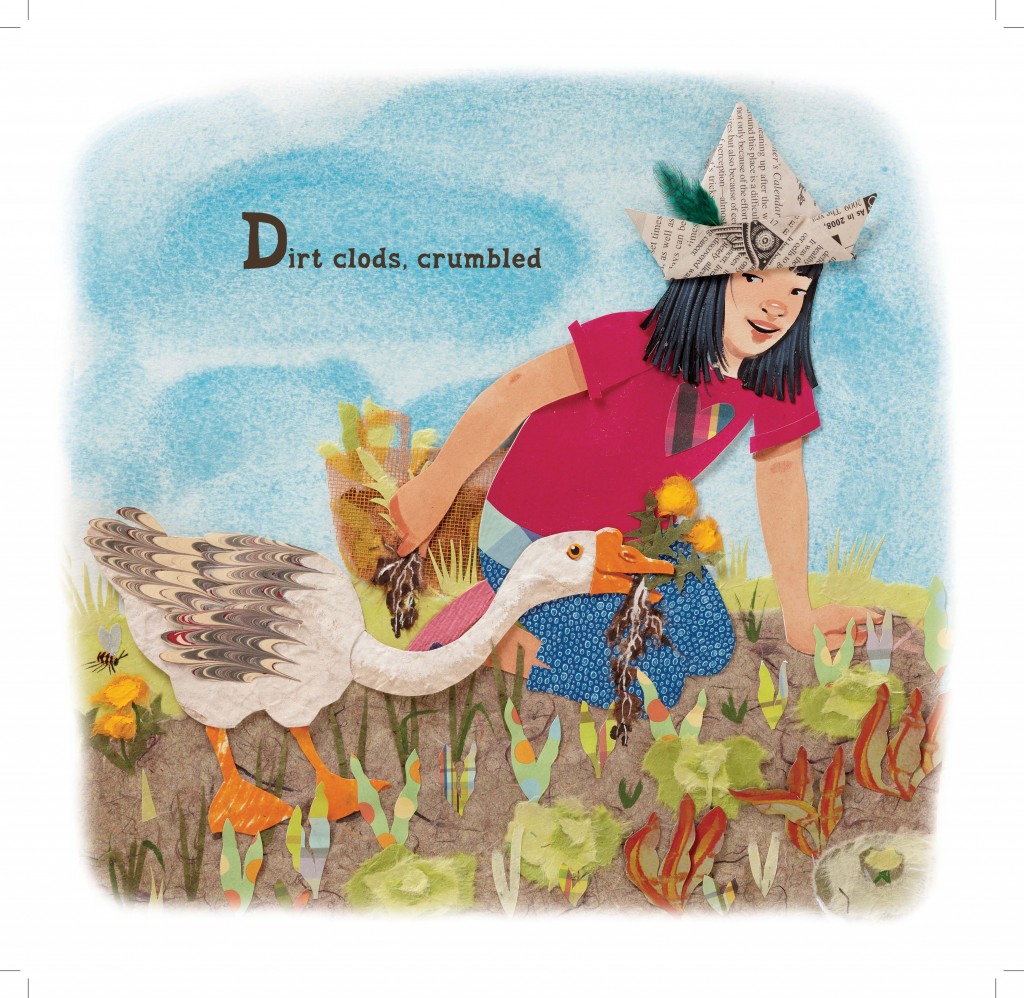
Illustration by Ashley Wolff
About the Author: Mary McKenna Siddals is the author of several picture books for the very young, including Millions of Snowflakes. In addition, she has written dozens of children’s stories, articles, poems, and activities appearing in a variety of magazines. A former teacher, she lives in British Columbia, Canada, where she enjoys tending to her own batch of Compost Stew. Learn more about Mary at www.siddals.com.
About the Illustrator: Ashley Wolff is the author and/or illustrator of more than sixty children’s books, including Baby Beluga; I Love My Mommy Because; I Love My Daddy Because; Mama’s Milk; Stella and Roy Go Camping; I Call My Grandma Nana; I Call My Grandpa Papa; When Lucy Goes Ou
By:
Bianca Schulze,
on 4/12/2011
Blog:
The Children's Book Review
(
Login to Add to MyJacketFlap)
JacketFlap tags:
Early Readers,
Board Books,
Sophie Blackall,
Kyrsten Brooker,
Ashley Wolff,
Annie Barrows,
Ages Four to Eight: Books for pre-school to second grade,
Book Lists: Specialty picks,
Ages Baby to Three: Books for infants and toddlers,
Picture Book - Wordless,
Environment & Ecology: Earth conscience,
Mercer Mayer,
Land Wilson,
Sue Cornelison,
Mary McKenna Siddals,
Angela Halpin,
Colleen M. Madden,
Edith Hope Fine,
Laura J. Bryant,
Lela Nargi,
Melita Morales,
Olivia Bouler,
Add a tag
By Bianca Schulze, The Children’s Book Review
Published: April 12, 2011
Learning to Nurture Nature
Gardening, recycling, composting, and being at one with nature (including our vanishing honeybees) and all it has to offer; these are great ways to connect young children with our environment and encourage them to nurture our special one-of-a-kind Earth.
Picture Books
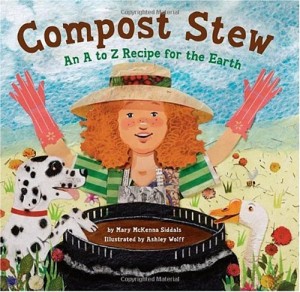 Compost Stew
Compost Stew
By Mary McKenna Siddals (Author), Ashley Wolff (Illustrator)
Reading level: Ages 4-7
Hardcover: 40 pages
Publisher: Tricycle Press; 1 edition (March 23, 2010)
Source: Publisher
Compost Stew: An A to Z Recipe for the Earth uses a clever and entertaining rhyme that, just as the title suggests, gives a great recipe for making compost. All of the ingredients are familiar household products, such as vegetable trimmings, coffee grounds, and oatmeal. At the back of the book the “Chef’s Note” can be found—it’s another witty rhyme all of its own and teaches readers what shouldn’t go in compost. The illustrations, which are rendered in gouache and collage, compliment the tone of the recipe with the use of more familiar recyclable materials.
Add this book to your collection: Compost Stew
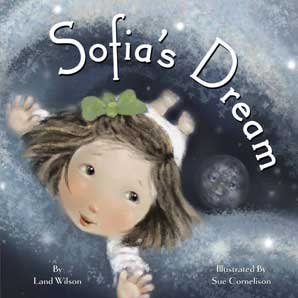 Sofia’s Dream
Sofia’s Dream
By Land Wilson (Author), Sue Cornelison (Illustrator)
Reading level: Ages 4-7
Hardcover: 19 pages
Publisher: Little Pickle Press LLC; 1st edition (November 24, 2010)
Source: Author
Sofia’s Dream was written for the sole purpose of inspiring children to take care of the earth. Beginning with the cover image of an angelic young girl soaring high in the sky, her eyes full of hope and untarnished optimism, a magical tone is set for the story. Wilson’s appreciation for nature and environmental protection shine through in this powerfully uncomplicated picture book.
Add this book to your collection: Sofia’s Dream
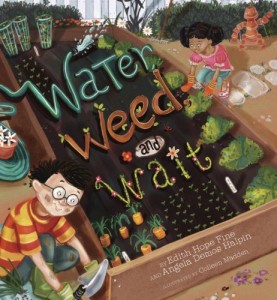 Water, Weed, and Wait
Water, Weed, and Wait
By Edith Hope Fine (Author), Angela Halpin (Author), Colleen M. Madden (Illustrator)
Reading level: Ages 4-7
Hardcover: 32 pages
Publisher: Tricycle Press (August 10, 2010)
Source: Publisher
Gardening requires a little hard work and patience, but the benefits are plentiful. In Water, Weed, Wait, Miss Marigold&rs
Reviewed by Carma Dutra, Picture Book Reviewer for the National Writing for Children Center
 Title: Mama’s Milk
Title: Mama’s Milk
Author: Michael Elsohn Ross
Illustrator: Ashley Wolff
Reading level: Ages 4-8
Hard Cover: 32 pages
Publisher: Tricycle Press; Bilingual edition (March 2008)
ISBN-10: 1582462453
ISBN-13: 978-1582462455
Mama’s Milk is wonderful, educational, and entertaining for the picture story book-age and their parents. Michael Ross describes different ways mothers of all creatures nurse their babies. This provides parents a wonderful opportunity to discuss how and why mothers nurse and the benefits of breast milk.
The author begins with a human mother cuddling and nursing her child. “Cuddle little baby warm and tight Mama’s going to feed you day and night.” The story continues with pigs and their piglets, “She’ll fatten you up in a sunny pig sty.”
Every page depicts a different animal nursing their babies and also gives the correct name of each animal and offspring. For example: A Mare and her fold; An elephant and calf. In the back of the book a classification and illustration of each highlighted animal is added with factual statements about nursing practices. Foals nurse every thirty minutes. Kangaroo milk is pink. My granddaughters grimaced with a “Ewwwwww!” giggling all the while. Also, a dolphin calf holds its breath while feeding underwater. Can you imagine?
Michael Ross’ book is a celebration of the beauty of natural breastfeeding and a reminder how much humans and other creatures on this planet earth have in common. The rhyming tone is gentle, comforting and loving. Parents will learn a lot, too, when they read along with their children.
The illustrations contribute greatly to the message by providing a way for young children to learn and identify animals. The two page spreads are illustrated in deep, rich, velvet looking colors giving off a warm glow.
About the Author: Michael Elsohn Ross has worked as a naturalist and environmental educator in Yosemite National Park for over three decades. He is the award-winning author of more than forty books for young people. Over the years he has acquired the nickname “bug author” Visit his website at www.bugauthor.com
********
Carma Dutra is a freelance writer and children’s writer. For tips about children’s writing and reviews of award winning books visit Carma’s Window at http://carmaswindow.blogspot.com. Download the free E-Books, Tips for Children’s Writers and Illustrators, and Unite to Write, a compilation of thirteen top expert authors as read on Ezine article directory.
Ashley Wolff,
Carma Dutra,
Mamas Milk,
Michael Elsohn Ross,
picture book review
 A Toucan Can, Can You?
A Toucan Can, Can You?









